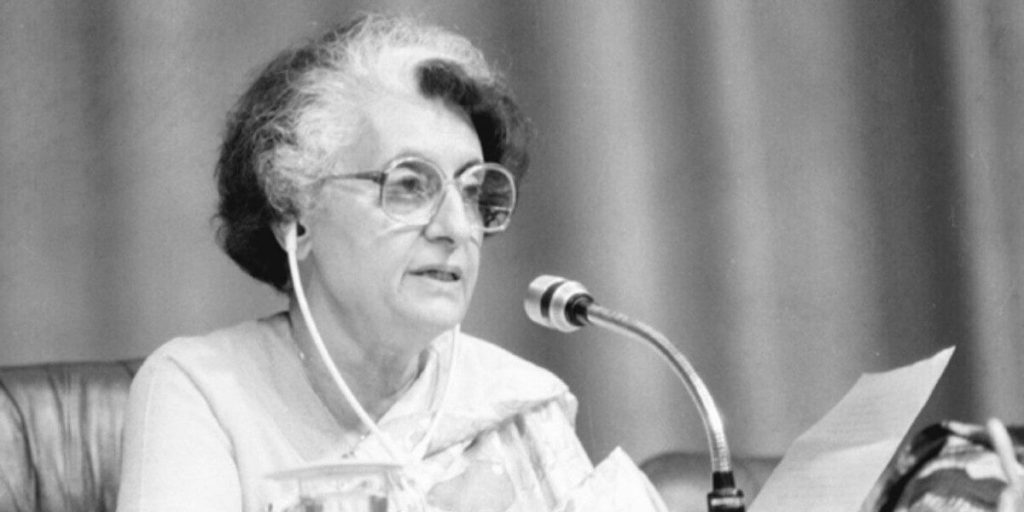It takes a lot to become the leader of a nation and at the same time be at the focal point of negative criticism, prejudices, and gender stereotypes. Indira Gandhi had to face all of it. Ever since she took up the scepter of being the first woman prime minister of India. Not only were the expectations from her very high. Because of the political legacy of Pandit Jawaharlal Nehru, Indira Gandhi’s father. But she was also silently mocked by many sentries of the patriarchal society for even trying to fill in her father’s shoes.
In the year 1960, when Indira Gandhi took the oath to lead India as its prime minister. Not only did she sign up for a monumental task. But also a barrage of challenges that she soon had to encounter.

Indira ascended the chair of the Prime Minister when India was at one of the most vulnerable points both politically and economically. After the controversial death of Lal Bahadur Shastri in the year 1966. Indira Gandhi was elected as the next Prime Minister of India. And that too by defeating Morarji Desai, who was a very strong contender for the prime minister’s office becoming the first woman prime minister of India. That was exactly when the challenges started to unfold for Indira Gandhi as everyone was cynical about her capabilities of leading the nation.
Indira had always envisioned the idea of India as a strong and self-sufficient nation, bold enough to challenge imperialism on the global front while at the same time establishing democracy and secularity in the country. It had been assumed by everyone that Indira Gandhi would follow in the footsteps of her father and work to complete his dream of making a progressive nation out of India, which was also a challenge for Indira because she had to prove herself time and again that she did not have to follow the legacy of her father and could prove her mettle as the leader of India in her unique way.
Ever since she became the first woman prime minister of India, Indira encountered one challenge after another, starting from the consecutive war-ridden years from 1962 to 1965. And that was not all for there were two successive droughts in the years 1965 and 1966, which led to a steady decline in the agricultural output by around 20%.
The economic condition was also very challenging as inflation rose by 2%, and the prices of food items rose exorbitantly by 20%. In such a situation, India was on the brink of a major famine, as the stocks of food started going down which turned India into a ‘begging bowl’ situation. The calamity was indeed very challenging for Indira Gandhi as she was the one who was supposed to get a hold of the situation and redress the crisis effectively.
Nevertheless, the ‘dumb puppet,’ as the opposition started labeling Indira Gandhi, did not bow down to any of those criticisms and challenges and decided to fight back with full conviction and courage.
Although she had already gained the title of ‘Durga’ after exhibiting determination, abilities, and success in support of the liberation war of Bangladesh as well as the leadership skills that she demonstrated to direct India throughout the dreadful Indo-Pakistan war, Indira Gandhi realized that she could silence all the criticisms only if she emerged successful in making the Indian economy a self-sufficient nation and an inherently stronger democracy as her role of the first woman prime minister of India suggested.
Indira Gandhi realized that it was the economy that formed the core of a country’s progress, and as long as India remained weak in terms of its economy, it could never be considered a strong nation compared to its foreign counterparts. That was when she launched the Green Revolution Strategy, which witnessed a 35% increase in food grain production between 1968 till 1971 suitable for the title – The first woman prime minister of India.
The severe shortage of food and a famine-like condition that had instigated many to bash Indira Gandhi’s incapability viciously, slowly receded as a continuous increase in the availability of food was observed going up to almost 110.25 million tonnes within the span of just a few years. It could be said that Indira Gandhi successfully put an end to the title of ‘begging bowl’ that India was branded until then. She was able to establish food security across the length and breadth of India and eradicate the crisis permanently.
It has been so long since Indira Gandhi’s assassination but never has anyone ever questioned the passion with which she had fulfilled her role as the first woman Prime Minister of India. Till her last breath, she prioritized India’s interest over everything. She was not only ready to make all sacrifices without batting an eyelid but was always prepared to face any challenge head-on.
However, perhaps the biggest sacrifice that Indira made was of her own life, as her body was torn apart by bullets when just a day before she had promised that every drop of her blood would be sacrificed for the good of Indians and the future of the country.



